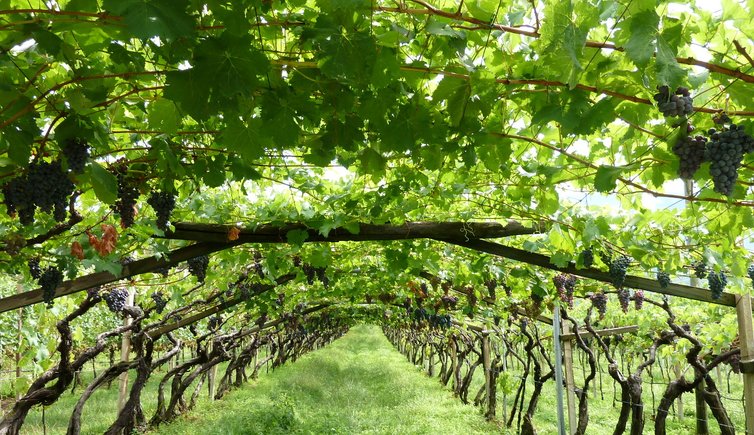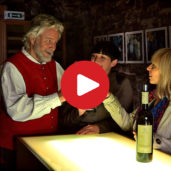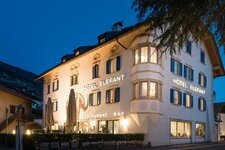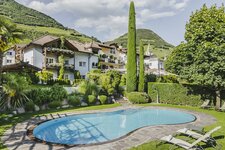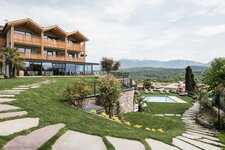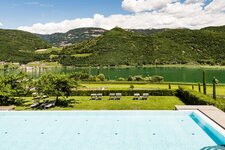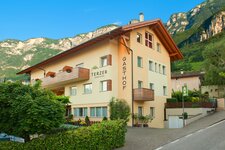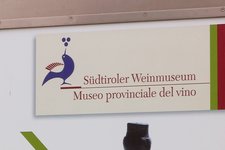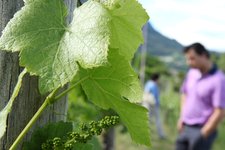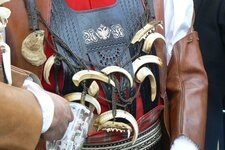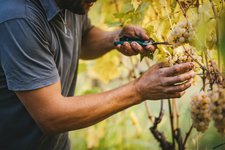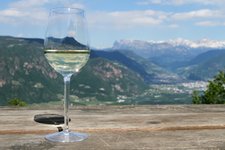The grapes from which the South Tyrolean wine is made find ideal growing conditions between Nalles and Salorno
Well-aerated soils, the favourite climate with the Alps creating a sheltering wall in the north and the Mediterranean influences from the south as well as the daily exhausting work in the vineyards between January and October ensure a good growth for the red and white grapes, which yield the noble wines of the South Tyrolean Wine Road. It is thanks to this particularly advantageous climate with an even distributed rainfall that the vines grow both at an altitude of 200 m a.s.l. in Salorno as well as at 1,000 a.s.l. on the Favogna high plateau.
Here, in the oldest wine-growing region of the German-speaking area, vines were already cultivated by the Romans - and the wines stored in wooden barrels hold together with iron rings - and brought as far as to the Imperial Court in Rome. In Middle Ages, however, when also Tegernsee, the largest monastery of Bavarian history, had its properties and vineyards in Caldaro, wine-growing was one of the tasks of the clergy. Back then, wine was even seen as a medicinal product - bishops, monks and abbots had the precious wines delivered to Austria and Southern Germany.
However, wine-growing culture has gained a foothold in South Tyrol since 1905. Since that point of time, wineries and wine farmers have aimed at producing high-quality "raw material" and respective expressive wines. Vernatsch and Lagrein are two of the autochthonous grape varieties of the south of South Tyrol and cover a large part of the vineyard area. Wines such as the ruby-red and fruity Kalterersee Auslese (Caldaro D.O.C.) and Gewürztraminer, a white wine low in acid, made the name of these villages - Termeno (Tramin, in German) and Caldaro (Kaltern) - famous all over.
Until lately, grapevines were cherished in pergolas, where the roof of the grapevines protects the grapes from excessive incidence of the sun's radiation as well as hail. But the landscape keeps changing and now most of the grapevines are established without roof, providing a new landscape pattern. The Guyot pruning system is gaining ground in South Tyrol, as it also enables to better engage machines: Along one line of metal posts wires are tightened along which the grapevines grow upwards. In October, the red and white grapes are harvested and stored in barrels in the vaults of the wineries where they can mature to the famous South Tyrolean wines...
